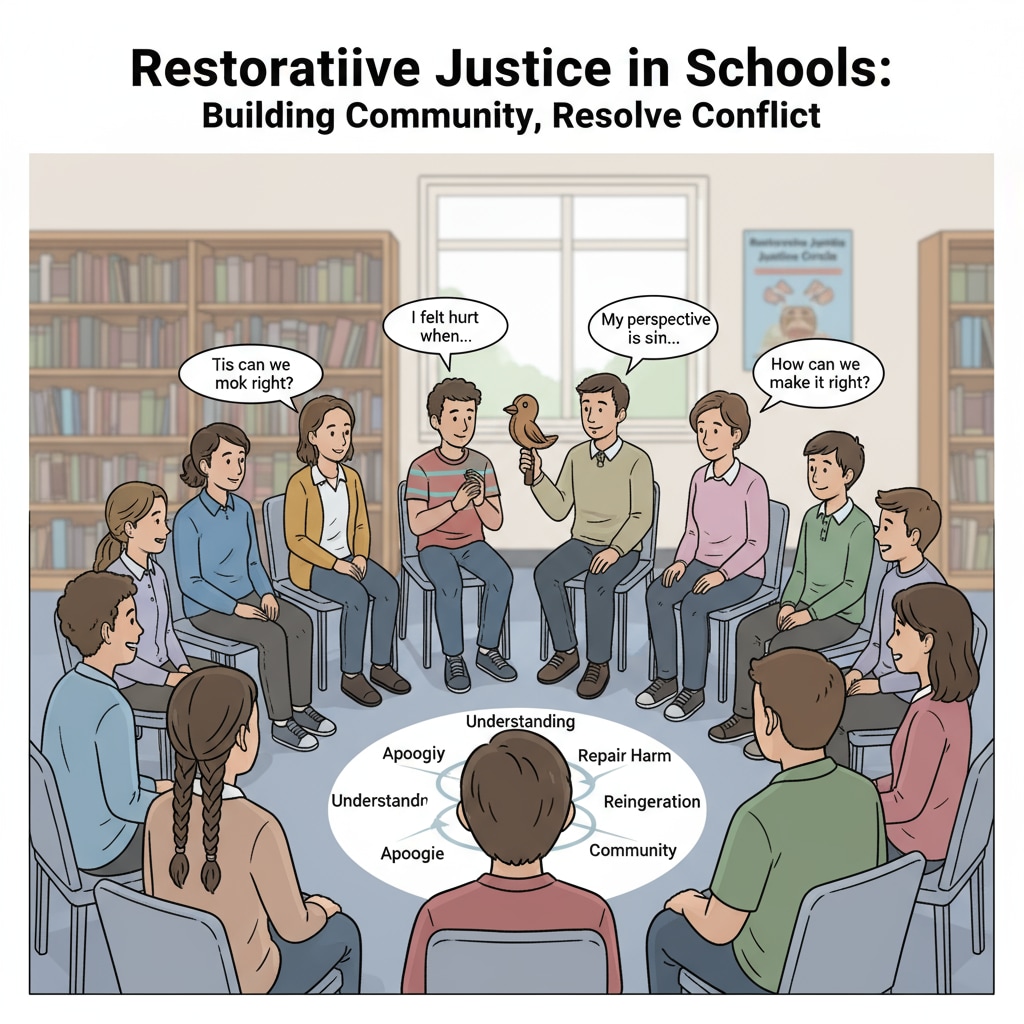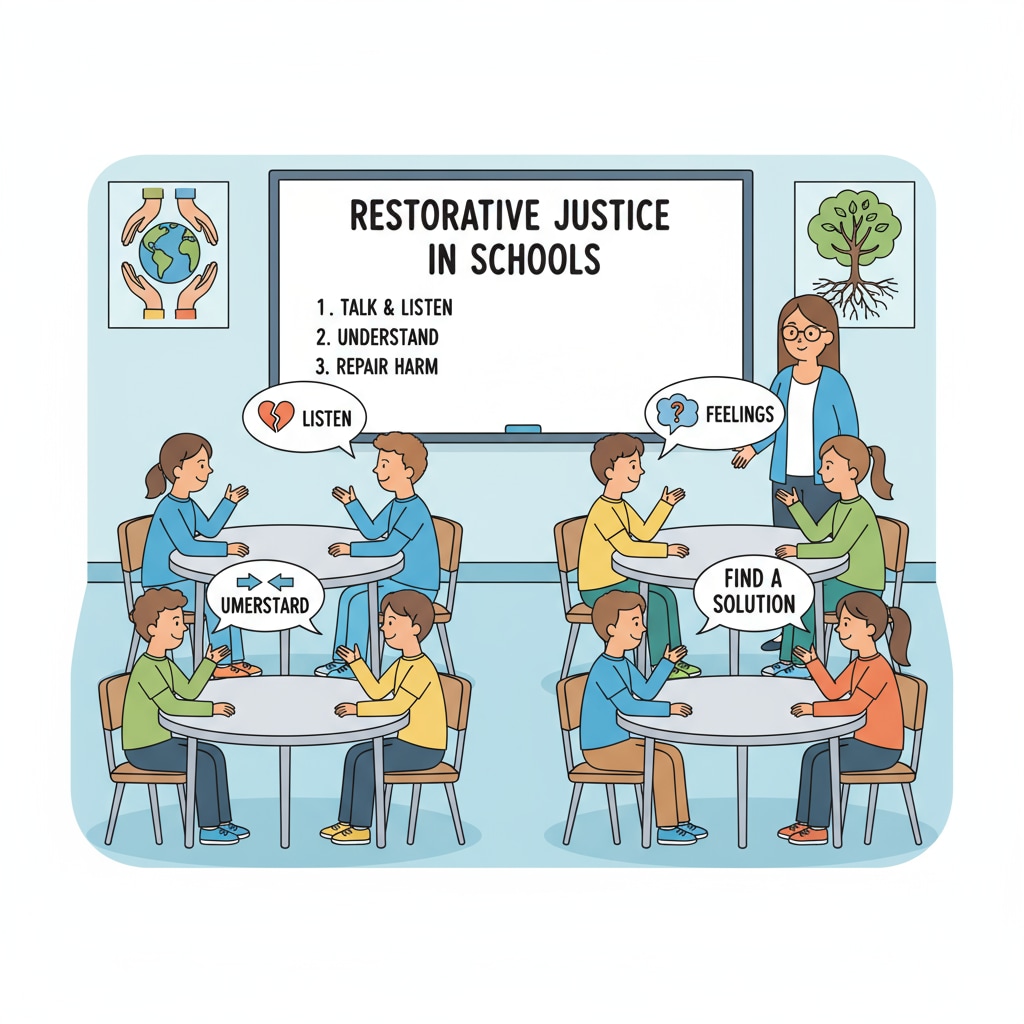Restorative justice, educational resources, and school implementation are crucial elements in shaping a positive learning environment in K12 education. In recent years, there has been a growing interest in applying restorative justice principles within schools to address conflicts and build stronger relationships among students, teachers, and the wider school community.

This approach aims to repair harm, foster understanding, and promote healing rather than simply punishing wrongdoers.
The Core Principles of Restorative Justice in Education
At the heart of restorative justice in K12 education are several key principles. Firstly, it emphasizes the importance of involving all parties affected by an incident. This means that when a conflict occurs, instead of just disciplining the student who caused the problem, the school reaches out to the victim, the offender, and often other students or teachers who may have witnessed or been impacted. For example, Restorative justice on Wikipedia explains that this inclusive approach helps everyone understand the full impact of the situation.

Secondly, restorative justice focuses on repairing the harm done. This could involve the offender apologizing, making amends, or taking steps to fix any damage caused. It’s about creating a sense of accountability and giving the opportunity for the harmed party to express their feelings and needs.
Educational Resources for Implementing Restorative Justice
There are numerous educational resources available to help schools implement restorative justice effectively. Many organizations offer training programs for teachers and school staff. These programs teach techniques such as circle processes, which are a common restorative practice. In a circle, students and teachers sit together to share their thoughts, feelings, and experiences in a safe and supportive space. Restorative justice on Britannica provides more insights into these practices.
In addition, there are books, articles, and online materials that offer practical guidance. Some resources focus on age-appropriate activities for different grade levels, ensuring that restorative justice concepts can be easily understood and applied by students of all ages.
Implementing Restorative Justice in K12 Schools
Implementing restorative justice in K12 schools requires a systematic approach. Schools can start by integrating restorative practices into the school curriculum. For instance, incorporating lessons on empathy, communication, and conflict resolution. This helps students develop the skills needed to engage in restorative processes.
Another important aspect is creating a school-wide culture that supports restorative justice. This involves teachers, administrators, and all staff modeling the principles of respect, understanding, and accountability. By consistently demonstrating these values, students are more likely to embrace and participate in restorative practices.
Readability guidance: In summary, restorative justice in K12 education offers a powerful way to transform school culture. By leveraging educational resources and implementing these practices effectively, schools can create a more harmonious and inclusive environment where students can thrive. It’s a journey that requires commitment from all stakeholders, but the rewards in terms of improved relationships and a more positive learning atmosphere are well worth it.


